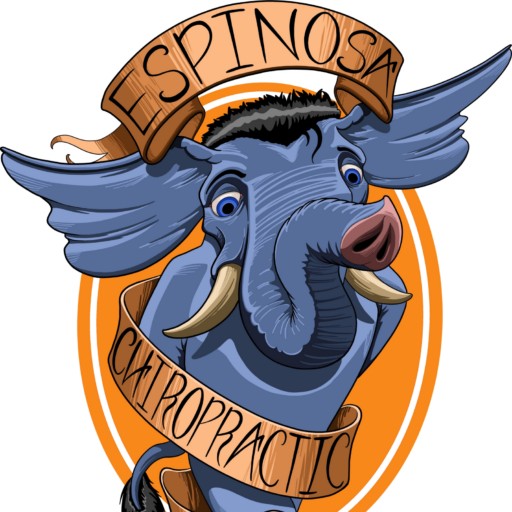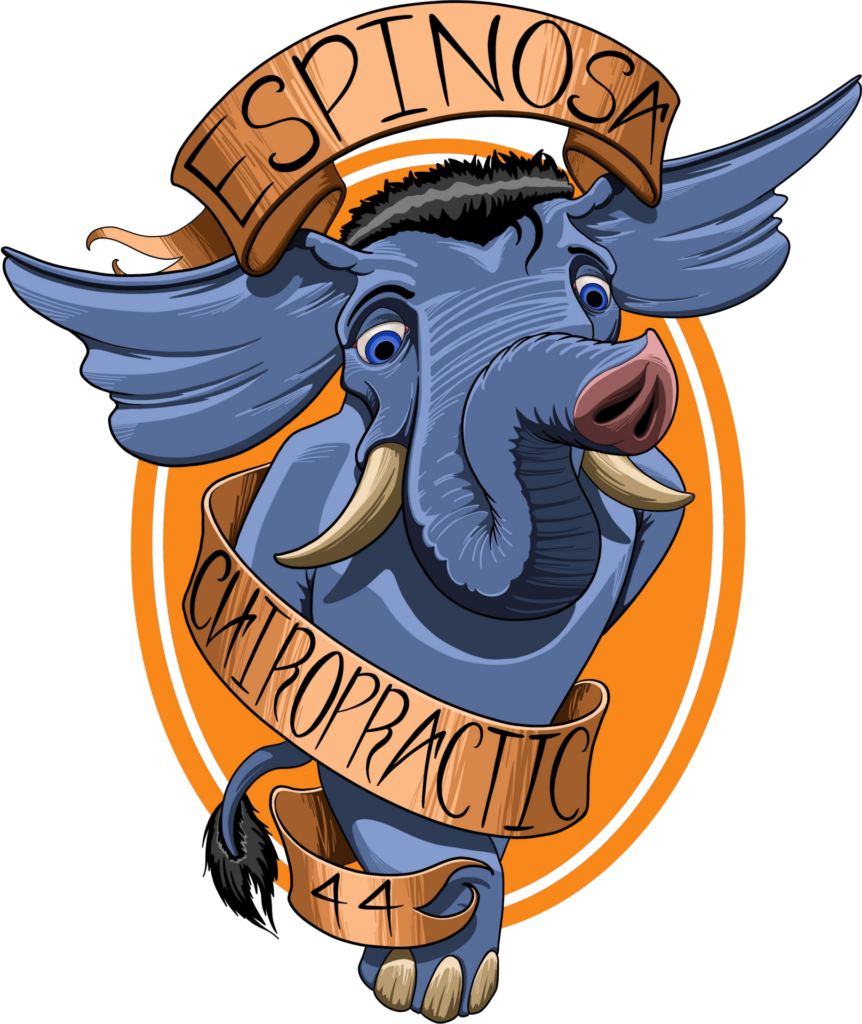Posts by Espinosa
Untying your Knots

Feeling stiff is not feeling well
Even if we don’t have a tool to measure it with, everyone knows what it feels like to be stiff. It’s uncomfortable, it might even be a little bit painful, and when it occurs regularly, we generally look to the muscles for answers.
Knots, trigger points, tight balls of pain
Whatever your name for them, they indicate a malfunction in the musculature. Remaining motionless for long periods of time (especially sitting) keeps some muscles constantly contracted and others completely disused. This constant contraction is what often develops into tight balls of pain and we feel tight. Your muscles are also being trained to resist elongation, perpetuating the problem further. The next time you go to activate the muscle, you feel stiff.
Stiffness doesn’t mean there is something wrong with your range of motion.
Because the range of motion is the metric most people rely on for measuring potential movement, conversations regarding stiffness are quite often misguided in the direction of the range of motion. Being stiff doesn’t mean you automatically have a poor range of motion: you could have an excellent range of motion and still feel stiff. When our muscles are trained a certain way and we ask them to perform an opposing motion, they are bound to feel tight.
We want to make stiff and tight the exception, not the rule!
We identify muscles that have become excessively contracted and release them from their state of chronic tightness with trigger point therapy. By dispelling stiffness and pain, we allow you to focus on stretching and strengthening the key muscle groups that will help you stay free of pain throughout a day of sitting.
Life in the Mood Swing Lane

Mood swings are reflective of age and lifestyle.
Changes in temperament are normal for everyone on earth; mood swings are the more abrupt and seemingly extreme changes that seem to come on without reason. If we take the time to probe a little deeper, however, there is always a reason. Perhaps stress has been insidiously stacking for weeks; perhaps you haven’t been eating quite right and your cells aren’t getting the nutrition they need; maybe your activity level has been down and your body is responding with signals of pain that affect your mood; most likely, it is a combination of all of the above.
Mood swings are about imbalance.
The body and brain are constantly striving for homeostasis, which taken broadly is the tendency of your body and mind to seek equilibrium between the interdependent systems. As we get older, the pressures facing the body and minds’ attempts at homeostasis grow, our bodies trend toward becoming weaker, activity levels go down while stress levels go up and diet affects us more than when we were kids. Mood swings are a natural reaction to these pressures, but when they become unpredictable and destructive to our state of mind, it is time to take action.
Accounting for mood swings with help
At our office, we believe that many of the factors contributing to our mood swings can be reined in naturally, without pharmaceutical intervention. Chiropractic helps to correct subluxation and regulate the nervous system, the main vehicle of communication between brain and body. By streamlining nerve function, homeostasis becomes easier to achieve when you exercise control over other key lifestyle factors including diet, exercise, sleep and stress management. To start coordinating an action plan for dealing with your mood swings, give our office a call to schedule an appointment today!
Putting your Body Weight to Work

It’s time to make your weight work for you!
No matter your body weight, or your level of activity, body weight training allows you to utilize the most basic resource of all, the body weight you’ve accumulated, to condition your body and build muscle. Best of all, no gym membership is required and you won’t even need to spend a dollar on a dumbbell.
Here are some advantages to bodyweight training:
-
Boosts circulation and improves range of motion in the joints
-
Increases core stability, easing the burden on the lower back and helping with posture
-
Increases relative strength: strength in relation to your body size.
-
Increases reactive strength: the ability to stretch and contract muscles and prevent injury.
Body weight training works best in circuits
And circuits are intense: the methodology relies on the fact that you do workout after workout with no break in between, conditioning your heart to work at a higher level and boosting your Exercise Post Oxygen Consumption, which means you will continue to burn calories after your work out. Body weight training circuits are much more efficient at burning calories and contributing to weight loss than basic cardio.
As chiropractors, we would love to see people find better balance through increased core strength- this helps immensely with posture, especially if you have to sit all day at work. Furthermore, we would like to see you move with less pain and we can help you do this, through chiropractic adjustment and devoted attention to sore and tight muscles.
Healthy-ish: Starting Small with your Fitness Plan

Why is it so difficult to join the wide world of working out?
The start of a fitness plan is where many of us will fail. The reason is that with no momentum and no visible results, we lose motivation. We must therefore begin by redefining attitude: rather than obsessing over lost pounds, focus on the importance of fitness for your body and how it makes your brain feel. You should be getting at least a mild endorphin boost post-workout, so use what you have as motivation in the early stages.
Walking before running
If you work at a desk, in front of a computer, chances are that between home and the office you spend up to 70% of the day on your butt. So when it comes to starting small, walking more may be the place to look and it is certainly the easiest. Experts recommend getting up to 10,000 steps a day, a goal that can be tracked with a fitness app on most smartphones.
Focus on activities that make you happy
Your brain is the most powerful muscle in your body, so we want to get it involved! The best way to do this is by choosing an exercise that makes you happy. Running bores you? Don’t make running the center of your exercise plan. The gym isn’t for you? Choose an environment, like your own home, where you feel most comfortable. At our office, we help people create clearly defined goals and stick to them. We are about making your body feel better- through chiropractic adjustment and treatment of muscle dysfunction, we get your body into conducive shape for exercise. From there, we help you maintain a fitness plan for the benefit of your body and mind.
Television and Exercise: a Perfect Match

Television time can be doubled up as workout time.
While there is great value in using your time in front of the television to unwind- down time if you will- we often forego exercise for the easiness of kicking back on the couch. The two don’t have to be mutually exclusive; you can still get a great workout while watching your favorite show.
To demonstrate my point try this exercise while you are sitting reading this blog:
- Sitting with good posture, squeeze your abs, hold 5 seconds, and release. Repeat a few times.
- Again with good posture, squeeze your glutes, hold 5 seconds, and release. Repeat a few times.
Just like that, you are on the road to toning your muscles, especially the external oblique muscles of the abdomen which are important for maintaining good posture while you sit and watch.
Try incorporating an easy workout circuit into your Netflix habit.
Between episodes, try alternating between push-ups, sit-ups, jumping jacks, lunges, squats, and wall sits. Challenge yourself to plank during the credits and in between shows. You will barely even notice the physical exertion before you sit down on the couch again, but trust me your body will be thankful!
Undoing the damage of sitting.
You already sat all day at work and now you are going to put your body through another spree of sitting in the evening. Simply getting up and having a stretch or doing 20 jumping jacks breaks the monotony of sitting, gets your circulation flowing, and utilizes the functional muscle groups of the body so that they don’t tighten up excessively.
Get Excited about Snacking

Meals are most important but snacking has its place too!
And it’s right in between! Snacking helps regulate blood sugar, which is important for people who need to stay steady throughout the day. When blood sugar drops low, we feel light-headed, hungry and stressed out- this is the classic formula known as “hangriness.” This drives us to crave something quick and satiating- say a chocolate bar. Which then does the opposite, spikes blood sugar levels, causing the body to produce more insulin, uptaking the glucose faster and leaving you low again. Snacks can help us stay balanced.
An equation for healthy snacking
- 150-200 calories
- Blend of carbs, protein and healthy fats
- Nutrient density
- Leave out processed fats and sugars
Some snack-y ideas that fit the formula:
- Apple and peanut butter
- Granola and yogurt
- Lunch meat and low-fat cheese
- Quinoa
- Hard boiled egg and hummus
- Certain nutrition bars
In a very basic scenario, you could split the difference between breakfast, lunch and dinner; i.e.: breakfast at 8, first snack at 10, lunch between 12-1, second snack at 3 and dinner at 6. But every schedule is different and a snacking schedule is rarely rigid. The important thing is to stay in touch with your body- know the warning signs of blood sugar dropping and hasten to eat something healthy before you cave into your sweet tooth’s tastiest desires. When done right, snacking can be fun and keep you sane!
Welcome to the 21st Century with Repetitive Stress Injuries

Repetitive Stress Injuries are a reality for many modern workers
If you are someone who works hours in front of a computer per day, take a second to appreciate all the hours you have spent doing what you do! When you add it up, you see that every day you perform the same task and this is the basis of repetitive injury: starting from the fingers and hands, we can trace a clear path back through the forearms to the shoulders, neck and head and then down the spinal column to the lower back where injuries to muscles and joints often occur.
This map becomes more torturous if we add consistently poor posture into the mix.
It’s no wonder that we treat many people whose bodies are reeling from the effects of a computer-reliant job.
Prevention takes dedication
We can treat your body for the ill-effects of a job that brings on repetitive micro-traumas, but it is up to you to carry out the task of prevention at work. Here are a few simple ways you can stay strong against the incursion of RSI:
- Break regularly. Set a timer and stand up for even 10 seconds every half hour. Once an hour, try to put your body through a quick set of stretches. The apple watch has this feature turned on by default. The apple watch prompts you to stand up after it detects prolonged sitting.
- Do everything you can to control and perfect your ergonomic setup. Use what materials you have; for example, a rolled-up jacket works in place of a lumbar-specific pillow.
- Develop muscles that make holding good posture easier.
- Practice good technique when typing: for example, let your hands float above the keyboard.
At our office, we pledge to you that we will find and address the cause rather than treat the symptom of your pain. We treat RSI with a combination of chiropractic adjustment, massage, and a focus on ergonomics and postural adjustment. Let’s roll back to the years when you could work for hours without the added stress of RSI; call our office to schedule an appointment today!
Breathe to Relax

Deep breathing is one of the most powerful ways you can influence relaxation.
When the stresses of the moment lead you to feel spun out, it is important to take a little time to breathe. In this way, you can harness the power of oxygen to refresh your body and mind and reset your perspective. Diaphragmatic breathing, better known as deep breathing, is the kind when you breathe in through the nose, contracting the diaphragm, and fill your lungs with air. You will know you have taken a deep breath when the abdomen expands rather than the chest.
Combine deep breathing with some simple muscle action to relieve tension throughout the body.
- Close your eyes and begin a pattern of deep breathing, as explained above.
- On the inhale, contract a muscle group and hold for up to 5 seconds.
- On the exhale, release the muscles
- Work your way down from shoulders to toes, one muscle group at a time.
Optimize your breathing with chiropractic
Breathing is a complex system that we tend to unlearn as get older. For example, it is an action that affects and is affected by posture. We want to help you breathe better and this begins with technique! Subluxation in the cervical region can affect the phrenic nerve which powers the diaphragm, thereby affecting breathing. Let’s work together to get your breathing back on track to fight stress and feel better!
How Technology is Changing Our Bodies

Our bodies on technology
The technology age is advancing rapidly, “optimizing our lives,” and our health in the process. However, as the guinea pig generations for many new technologies, it is important to remain wary about the possibilities for harm that they could cause. As chiropractors, we are seeing more people than ever with the so-called, “reader’s neck,” which has now become widespread under the moniker “Forward Head Posture.” Due to our heavy reliance on cell phones, tablets, and computers, our posture is worse than ever and many people are carrying up to 20-30 pounds of extra pressure on their spine at all times.
Here are a few places to use caution when it comes to using (or over-using) technology:
- Our spines: forward head posture, poor spinal curvature and the premature onset of degenerative spinal conditions are all linked to sit-heavy lifestyles, poor posture, and overuse of cell phones.
- Repetitive Stress Injuries: typing, typing, typing we are forever typing out messages, e-mails, and hashtags, before we even get to our office job. This does a lot of damage to fingers, hands, wrists and up to the shoulders.
- Headaches: staring at screens for too long can lead to eye strain, muscle spasms, and tension headaches.
How we help at Greenway Plaza Chiropractic
We are your safeguard for spines against the incursions of technology. With postural analysis, we can determine whether you have forward head posture and if so, begin a routine of stretching and strengthening of the neck muscles that will make it easier to hold your head properly; through chiropractic adjustment, we can effect great improvements on nerve functioning throughout the body which will reduce pain and help the body function optimally. We can identify behaviors that may contribute to repetitive stress and counsel you on ways to negate the damage of overuse injuries. Give our office a call to schedule an appointment today!
Resources for Managing Pain

Regardless of age or physical condition, everyone is prone to a flare of back pain. A person who has never experienced even a twinge of pain or stiffness may wake up one day to find that they slept awkwardly and their neck is now cricked. For people at all points on the spectrum between one-time pain and chronic conditions, it is important to know how to use your resources to allay pain so that it doesn’t sideline you completely.
When it comes to managing back pain in the moment, two of your best resources are ice and heat. And while this may sound like overstated conventional wisdom, it is important to know how to actually apply ice and heat, and why you are doing it. Some people prefer one or the other, but we find that they are especially effective, and actually compliment each other, when alternated in this order:
- Ice to relieve pain and reduce swelling and inflammation. When you apply ice to an injurious region, the blood vessels narrow in a process known as vasoconstriction, your muscles flex and inflammation is immediately reduced. Ice, in the form of a pack, a frozen damp towel, or a bag of frozen peas, should be applied to the injurious region for 10-15 minutes at a time, up to three times a day.
- Heat is used to relax the muscles and stimulate the healing process. The opposite of vasoconstriction, heat catalyzes vasodilation in which the blood vessels open wide, allowing nutrients and oxygen that are necessary for healing to flood the region. Most heat is preferable to dry heat, and you can apply it for up to 20 minutes at a time to achieve pain relief.
When it comes to managing your pain, knowledge is power. We help people find simple and natural ways to encourage a healthier, happier life. If you are suffering from chronic pain, it may be time to make the call and schedule an appointment so we can discern the true cause and begin the healing process.
